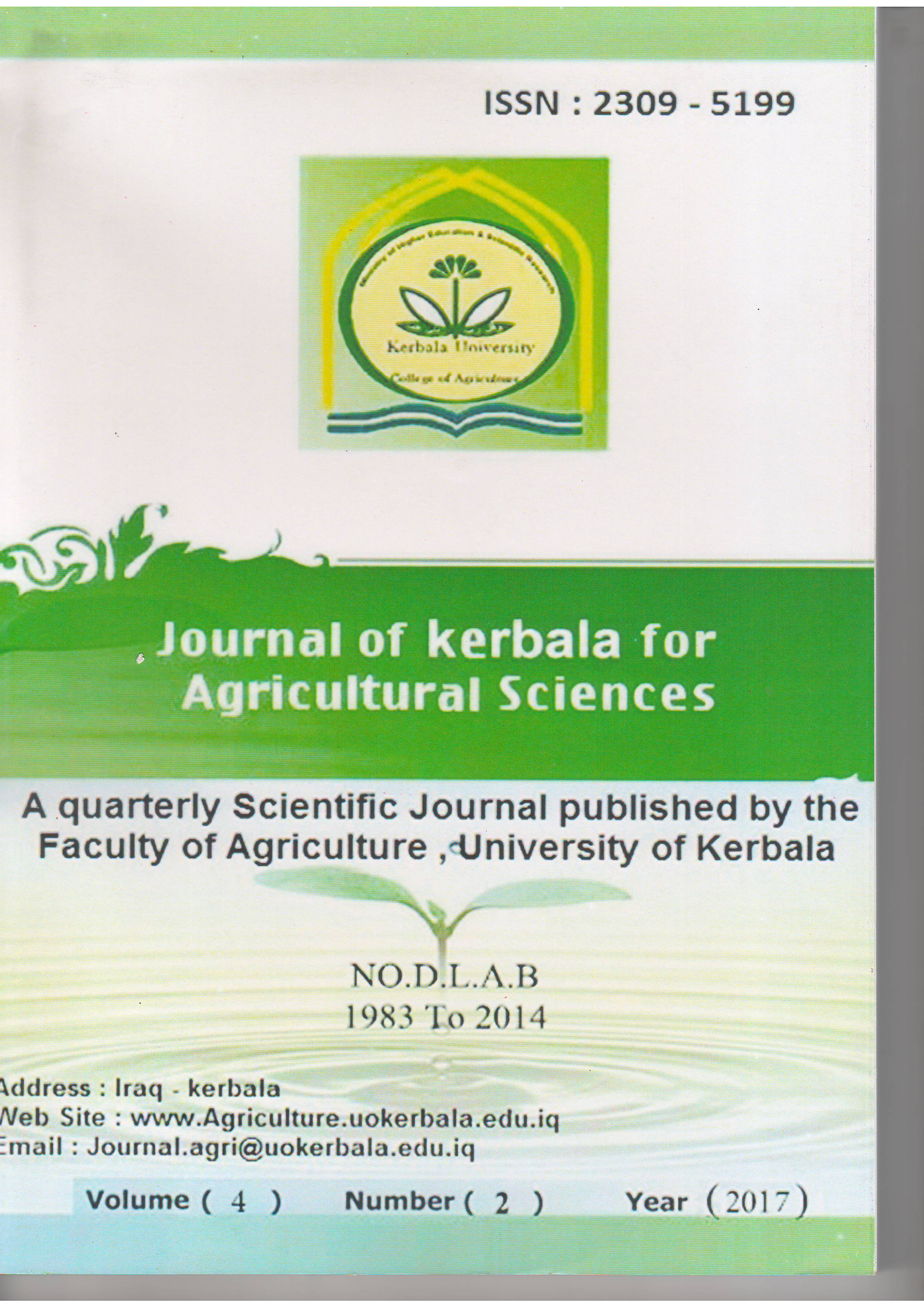Effect of salicylic acid on growth and yield of wheat (Triticum aestivum l) under drought condition
DOI:
https://doi.org/10.59658/jkas.v4i2.202Keywords:
Salicylic Acid, Drought, WheatAbstract
A Field experiment was carried out during the winter season of 2015-2016 at Al-Miqdadiyah-Diyala province to study effect of salicylic acid in growth and yield of wheat (Adna 99 cultivar) under drought conditions. Arandomized complete block design by Split Plot arrangement was used with three replications. The main plots included three levels of drought stress 50%, 75% and 100% from the recommended water. The sub plots included four concentrations of salicylic acid applied 0, 100, 200, and 300 part per million. The results showed that all the studied characteristics of growth, yield and yield components were significantly reduced by increasing drought levels. Plant height, number of tillers, flag leaf area, dry weight of plants, number of spikes number of grain per spike, weight of 1000 grain, Grain yield, biological yield and harvest index were decreased. Lowest values recorded by 50% from recommended water. While 100% from recommended water recorded highest values 82.89cm, 610.6 tiller.m-2 , 41.07cm, 1280.9 gm.m-2 , 521.7spike.m-2 , 49.31grain .spike-1 , 33.24 gm, 8.52 ton . h-1 , 24.35 ton . h-1 and 35.02% respectively. Salicylic acid improved all of studied characteristics except number of spikes. The concentration 100 part per million was the best concentration, which recorded 80.35 cm, 571.13 tiller.m-2, 39.63cm2, 1207.7gm.m-2 ,45.81 grain.spike-1 , 33.90 gm,7.58 ton .h-1 , 22.18ton .h-1 and 33.99% , respectively. It was concluded that drought stress reduced growth and grain yield. Salicylic acid improved growth of plants and caused increasing in grain yield with and without drought conditions.
Downloads
Published
How to Cite
Issue
Section
License
Copyright (c) 2017 Copyright (c) 2024 is the Author's article. Published by the Journal of Kerbala for Agricultural Sciences under a CC BY 4.0 license

This work is licensed under a Creative Commons Attribution 4.0 International License.
Licensing Terms
All articles are published under a Creative Commons License and will be directed to the Creative Commons Attribution 4.0 International License (CC BY 4.0) That permits use, distribution, and reproduction in any medium, provided the original work is properly cited. This license also allows the work to be used for commercial purposes.
Use by both non-commercial and commercial users
This content is licensed under a Creative Commons Attribution 4.0 International (CC BY 4.0) license, permitting use by both non-commercial and commercial users. Individual users may access, download, copy, display, and redistribute the articles to colleagues, as well as adapt, translate, and text- and data-mine the content, subject to the following conditions:
- The author's moral rights, including the right of attribution and the right to protect their work from derogatory treatment, are respected.
- Where content in the article is identified as belonging to a third party, users must ensure that any reuse complies with the copyright policies of the owner of that content.
- If the article content is reused for research or educational purposes, users should maintain a link to the appropriate bibliographic citation, including the DOI and a link to the published version on the journal's website.

